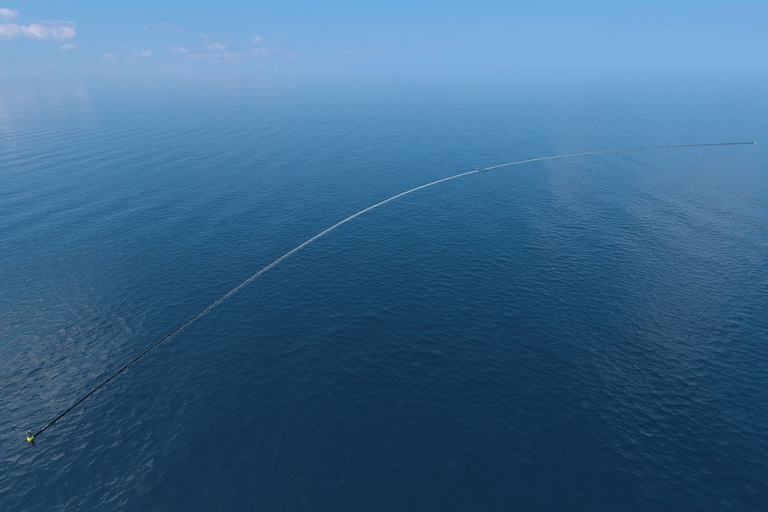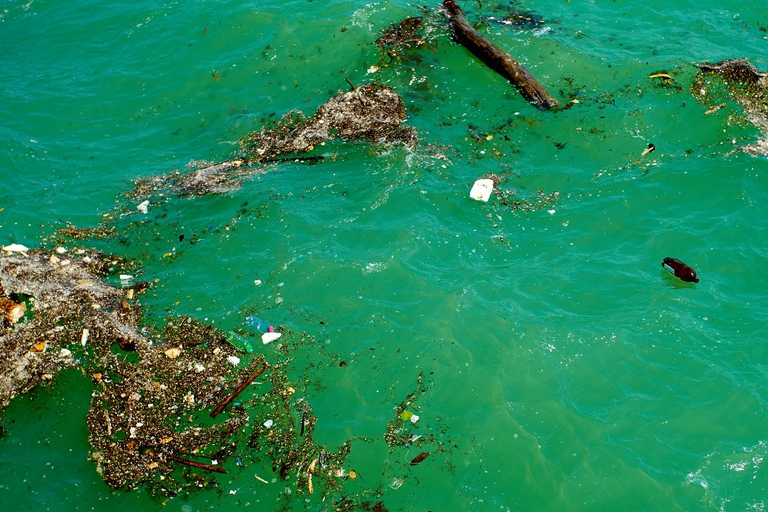
A group of experts in Tokyo suggested pouring radioactive water from Fukushima into the open sea. A marine biochemist explains the consequences of this absurd decision.
The Ocean Array Cleanup invented by Boyan Slat is headed towards the Great Pacific garbage patch where it will begin to gather tonnes of plastic waste accumulated by oceanic currents.
Boyan Slat’s vision has become reality. Five years have passed since 19-year-old Slat left his aeronautical engineering degree to dedicate himself to his mission: cleaning up the ocean from plastic. The young prodigy from The Netherlands founded the NGO Ocean Cleanup and designed a machine to gather plastic waste from the ocean using currents. After a feasibility study and a successful fundraising campaign, the Ocean Array Cleanup system is ready to be tested on the field (in the sea). In a few weeks time it’ll set sail from San Francisco, in the United States, towards the Great Pacific garbage patch, also known as the Pacific trash vortex, located between California and Hawaii. A euphoric Slat stated that, “the cleanup of the world’s oceans is just around the corner”.
Read more: The Ocean Cleanup has begun! The device to clean up ocean plastic is on its way
The idea behind Ocean Array Cleanup is simple and brilliant: the machine uses the sea’s currents, the same ones that created the plastic island in the first place, to move the waste onto platforms so that the ocean may “clean itself”. The system is made up of a chain of floating barriers that have no nets and are each two-kilometres long. Aligned with the currents, they drive the plastic towards platforms that act as funnels. Approximately once a month a boat picks up the waste gathered at the centre of the machine.
Slat’s objective is to collect approximately 5,000 kilos of plastic over the course of the first month of operations and to dispose of half of the Great Pacific garbage patch in five years. The machine will have a minimal environmental impact since it uses currents and doesn’t require energy to function. According to its creators, the Ocean Array Cleanup won’t put marine wildlife in danger as animals can simply swim below the floating barriers.
The Ocean Array Cleanup’s first mission is a field test to evaluate the machine’s functionality and to find any possible problems before extending the project further. The organisation’s plan is to install 60 giant floating platforms in various areas of the planet by 2020.
My speech on how we will rid the oceans of plastic https://t.co/fC4q533WuA pic.twitter.com/xHUBoycs7o
— Boyan Slat (@BoyanSlat) 15 maggio 2017
The Great Pacific garbage patch is mostly made up of plastic, it’s surface area is larger than France, Germany and Spain combined and it contains at least 79,000 tonnes of plastic. Slat stated that, “most of the debris was large stuff” but “it’s a ticking time bomb because the big stuff will crumble down to micro plastics over the next few decades if we don’t act”.
The large plastic island is mostly made up of abandoned fishing equipment like nets and ropes, and it causes the death of thousands of whales, dolphins and seals every year.
Read more: Plastic particles found in drinking water across the world
Ocean Cleanup intends to finance itself by selling the oceanic plastic that some brands, like Adidas and Stella McCartney, have started using to create recycled products because of their appeal for consumers. Though cleanup operations can be effective, they’re not enough as we must fight the root of the problem that is polluting and slowly killing our oceans, with a devastating effect on our and other species. According to Slat, “we have to clean up but we must also prevent plastic from entering our oceans. We should recycle and reuse this material for design projects, as well as regulating waste. We need to combine these solutions”.
Siamo anche su WhatsApp. Segui il canale ufficiale LifeGate per restare aggiornata, aggiornato sulle ultime notizie e sulle nostre attività.
![]()
Quest'opera è distribuita con Licenza Creative Commons Attribuzione - Non commerciale - Non opere derivate 4.0 Internazionale.
A group of experts in Tokyo suggested pouring radioactive water from Fukushima into the open sea. A marine biochemist explains the consequences of this absurd decision.
The decline in grey and humpback whales in the Pacific and Atlantic Oceans has been traced to food shortages caused by rising ocean temperatures.
The United Nations has launched a major international alliance for ocean science, undertaking a mission close to all our hearts.
The cargo ship that ran aground off the coast of Mauritius on 25 July, causing incalculable damage, has split in two and its captain has been arrested.
The largest coral reef in the world is severely threatened by climate change, but researchers are developing strategies that could contribute to saving the Great Barrier Reef.
Seychelles have extended its marine protected area, which now covers over 400,000 square kilometres, an area larger than Germany.
Norwegian oil giant Equinor had pulled out of drilling for oil in the Great Australian Bight, one of the country’s most uncontaminated areas. A victory for activists and surfers who are now campaigning for the area to be protected forever.
30 per cent of the planet needs to be protected to stop precipitous species decline. The UN has set out its aims for the the COP15 on biodiversity scheduled for Kunming, China in October.
Ocean warming has risen to record highs over the last five years: just in 2019 the heat released into the world’s oceans was equivalent to that of 5-6 atomic bombs per second. The culprit, no doubt, is climate change.









